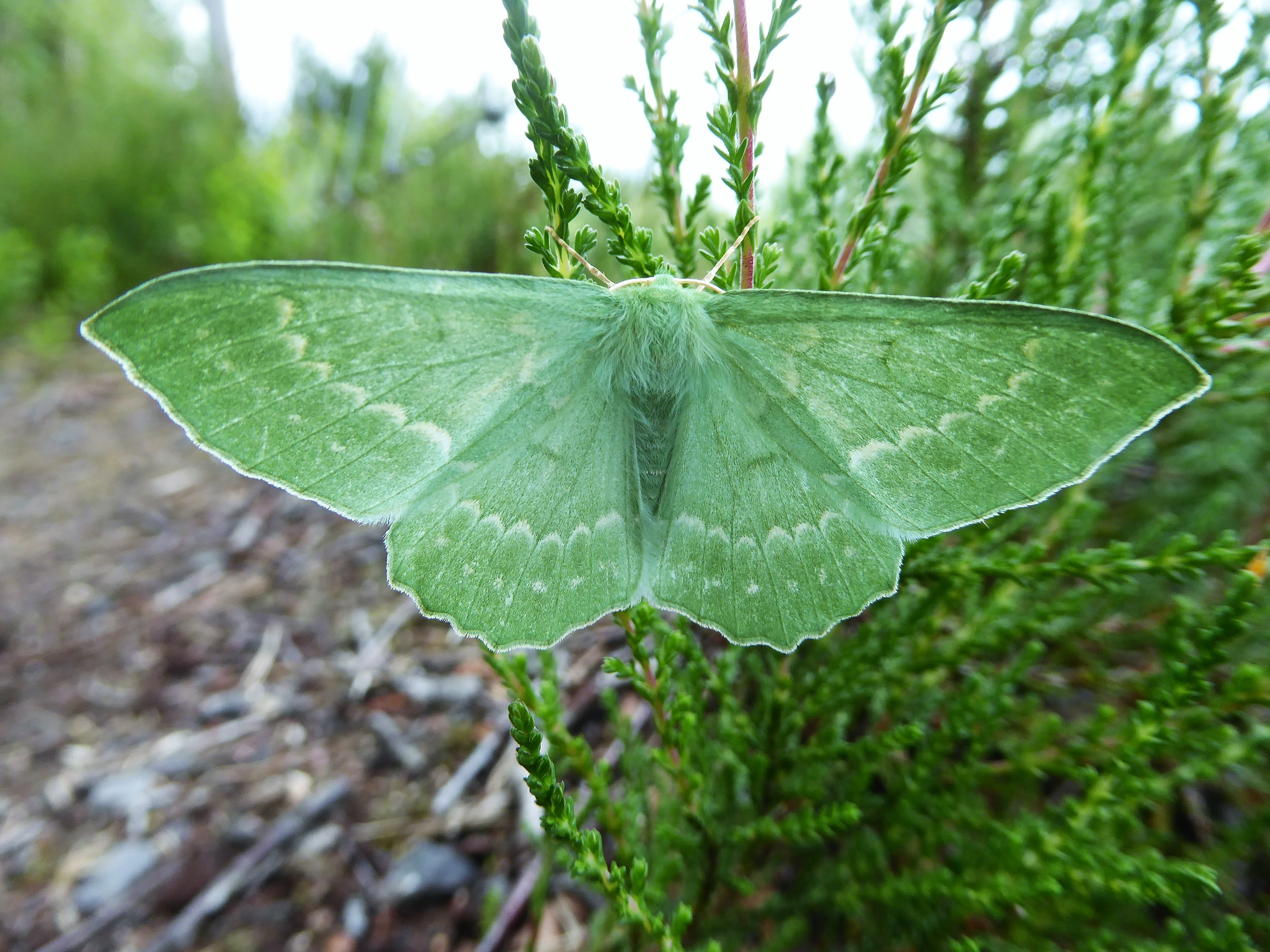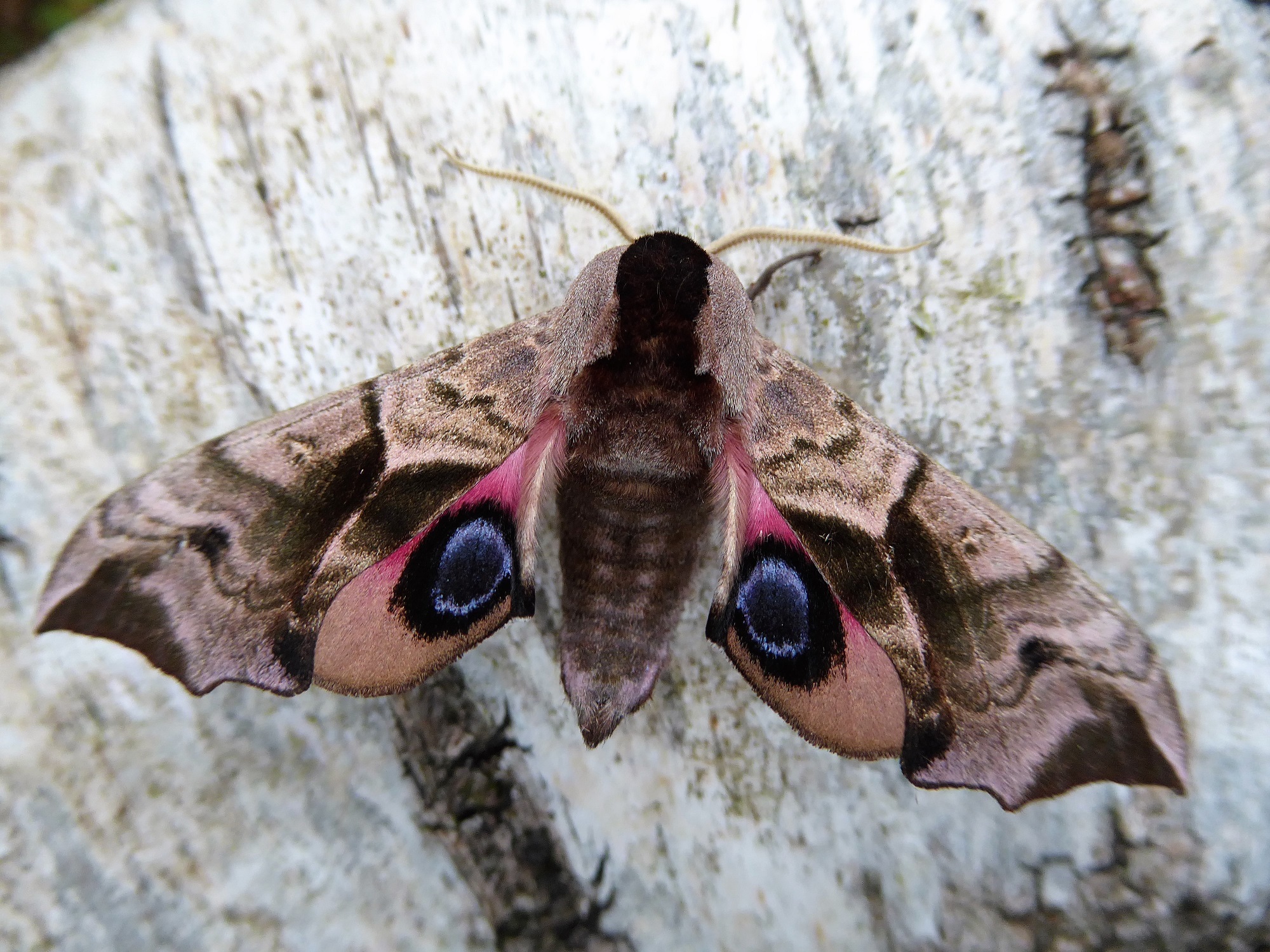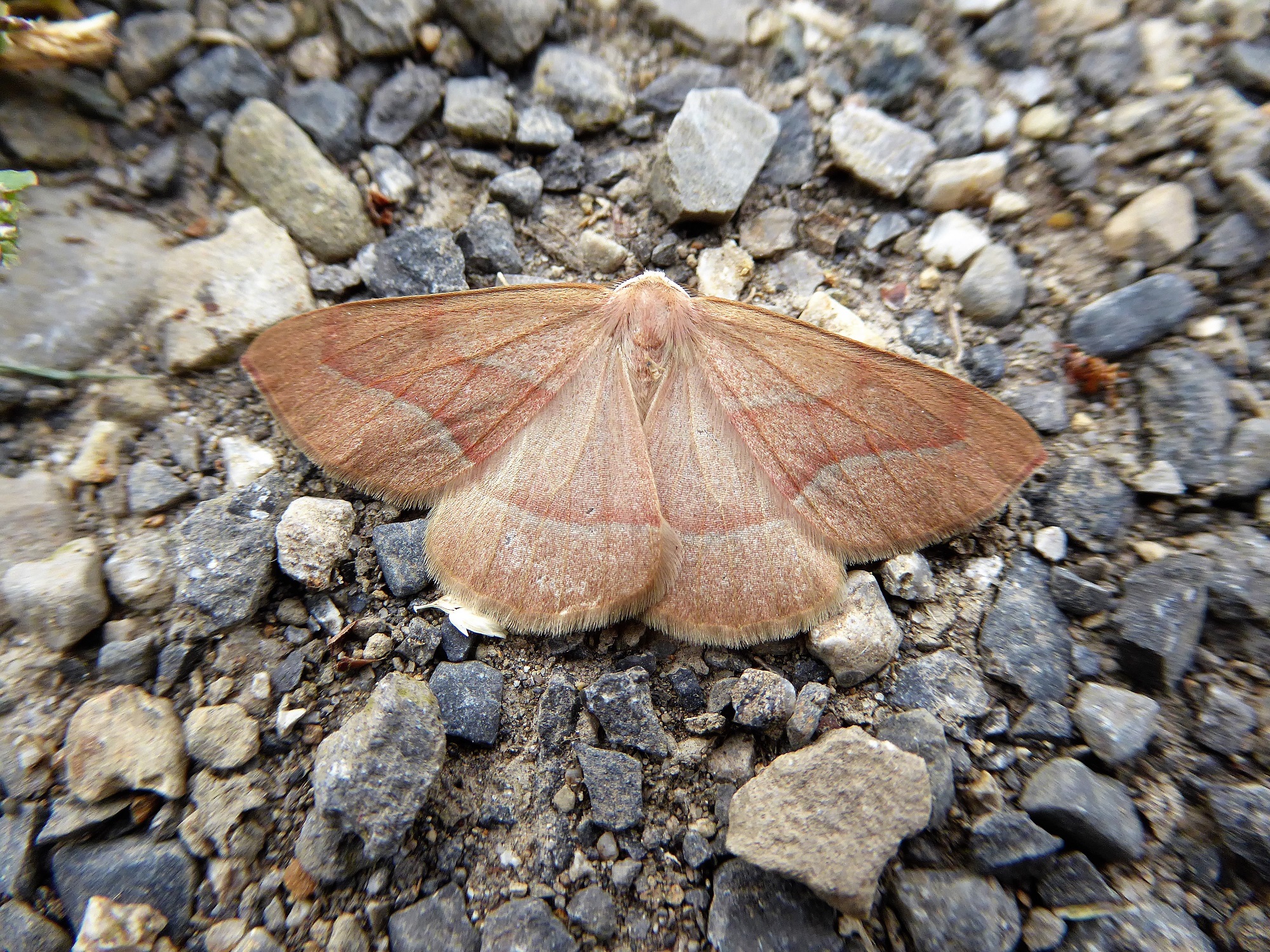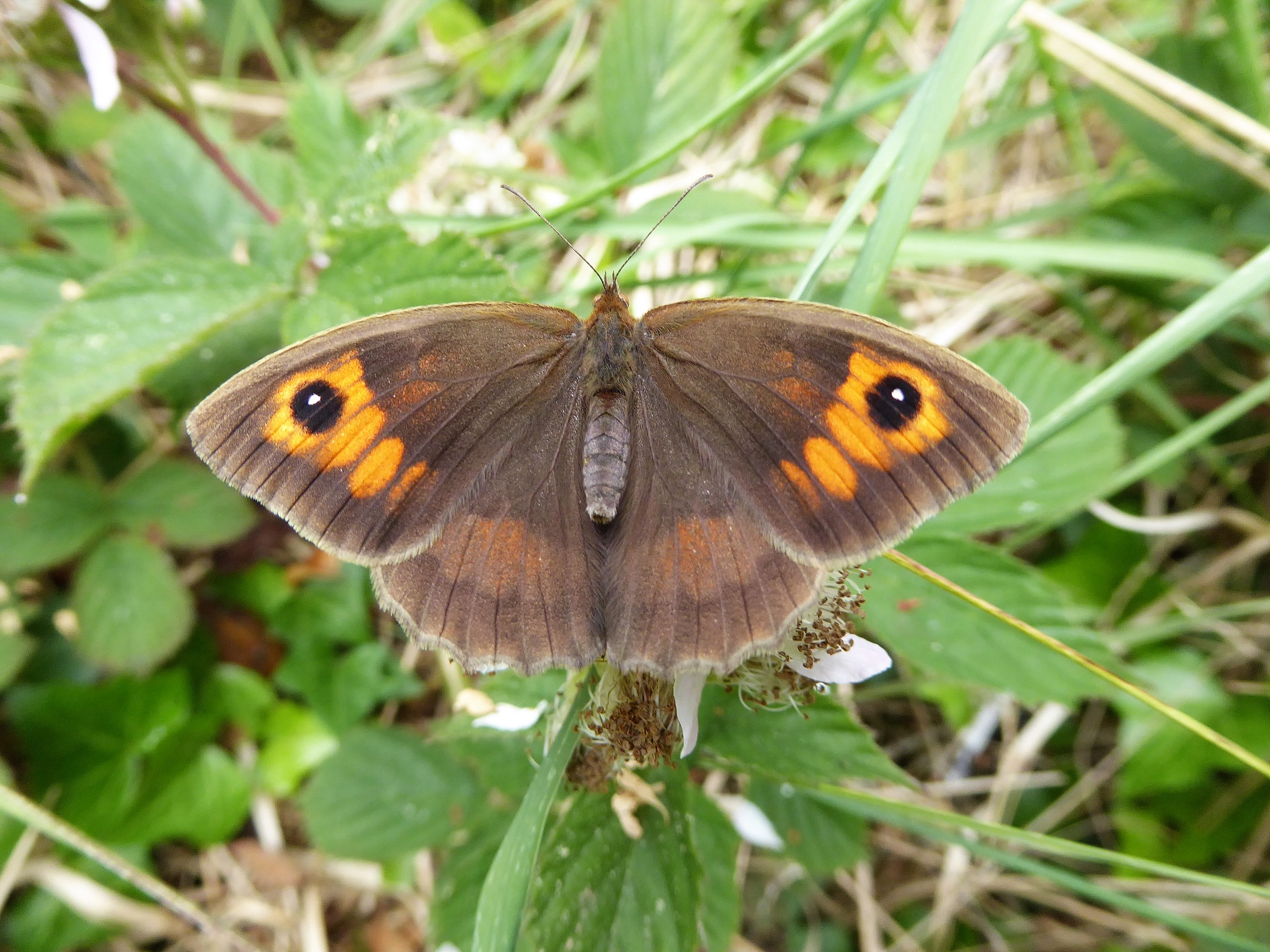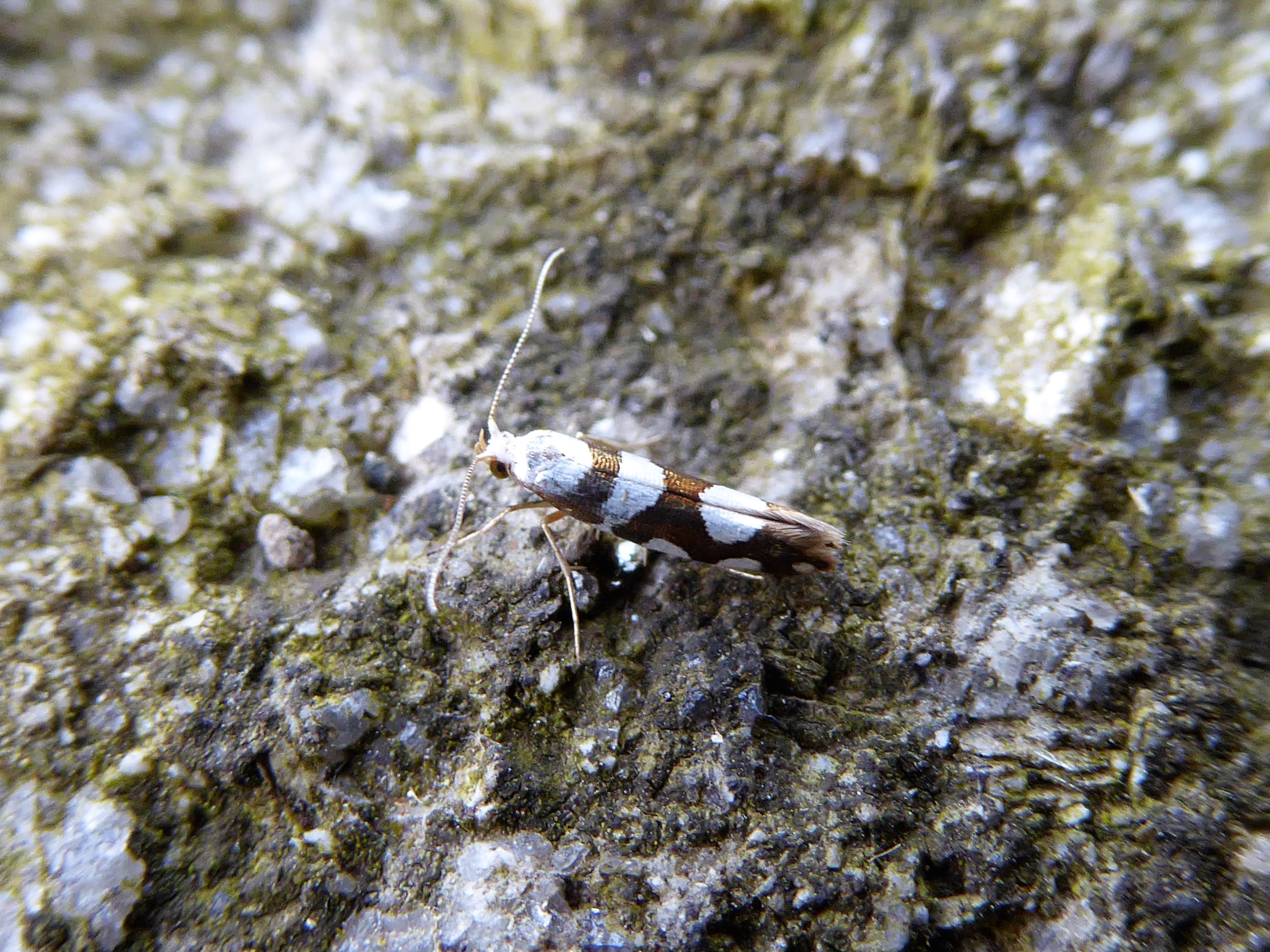The events were attended by Butterfly Conservation Ireland and Belfast Naturalists’ Field Club. The moth morning led by Philip Strickland was held at Lullymore Heritage Park followed by the butterfly walk led by Jesmond Harding which took place in Lullymore West and Lullybeg.
The previous night was dry, calm and warm, a perfect combination for moths. The five traps held good catches, especially the larger Robinson traps. The full species list is awaited, but highlights include Gold Swift, Goat Moth, Northern Eggar, Pebble Hook-tip, Grass Emerald, Large Emerald, Birch Mocha, Lilac Beauty, Barred Red, Waved Carpet (a scarce species), Northern Spinach, Eyed Hawk-moth, Poplar Hawk-moth, Elephant Hawk-moth, Beautiful Snout, Scarce Silver Y and Burnished Brass.
A great many photographs were taken by field club members who were very interested by the enormous range of the moths’ colours, patterns and shapes. Moth study is fascinating, even if one never gets beyond enjoying their physical appearance, especially the painstaking intricacies of their patterns.
The moths were released after the photos and their day-flying relatives were examined. A lovely female Meadow Brown showing delightfully intense orange fore-wing markings posed very nicely for the photographers. Often seen as a less glamorous species, this was certainly an arresting beauty. Ringlets bobbed along the wayside grasses following us as we made a stroll to the rich grasslands at Lullymore. Marsh Fritillary eggs were seen on the underside of a large leaf of the food plant, Devil’s-bit Scabious. These have turned purple-brown, having been laid about a week ago. Their parents are no longer alive, but have left us with the next generation in egg form.
Common Blues fluttered their shining, tinfoil blue wings above still yellow Common Bird’s-foot-trefoil flowers, while a myriad of marauding dragonflies made their direct linear flights and hairpin-bend turns. One snatched a Birch Mocha which it dispatched immediately. The species seen included Four-spotted Chaser, Black-tailed Skimmer, Brown Hawker and a single male Emperor.
Later, Dark Green Fritillaries dashed across our path and vanished as swiftly. These restless, shining orange jewels leave one breathless at their glowing colour and exhilarating movement. It is a pity, though, that they rarely allow a close view.
Near the end of the track connecting Lullymore and Lullybeg, where the two buckthorn trees grow together, a faded Brimstone arrived, still laying her eggs. We netted her for a close view to find her wings perfectly in order, after an adult life-span of over ten months. She was released and resumed her egg laying almost immediately.
There was one mystery. A large, dark butterfly was observed, fluttering around the tops of birch trees. If seen in Europe, it might be expected to reveal a Camberwell Beauty or Purple Emperor. But it did not descend, and the mystery of its identity remains.
A special thanks to the large number who attended and showed great enthusiasm for nature’s wonders. It was a lovely experience for all.
